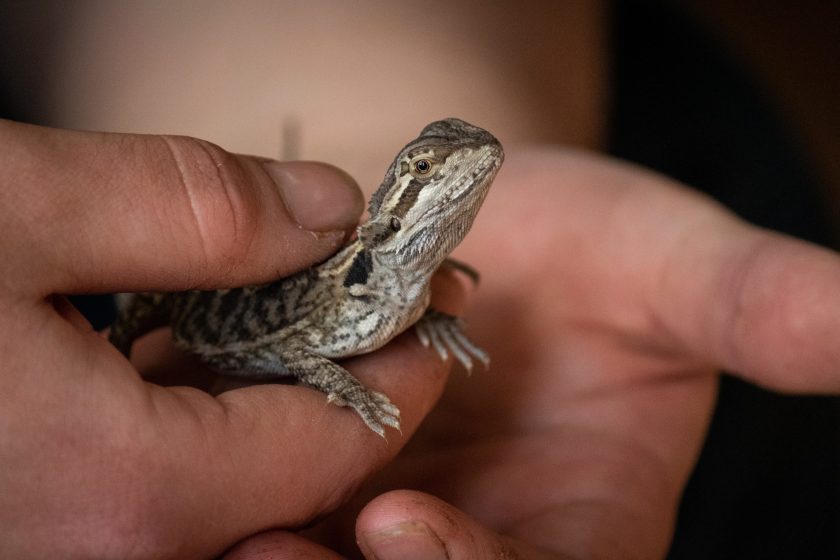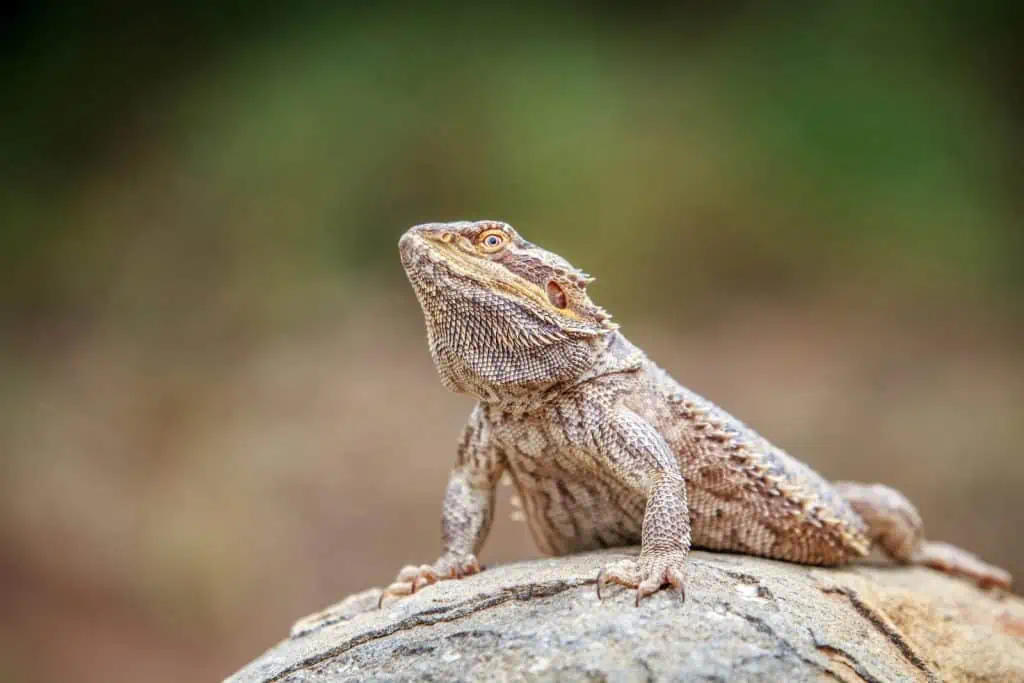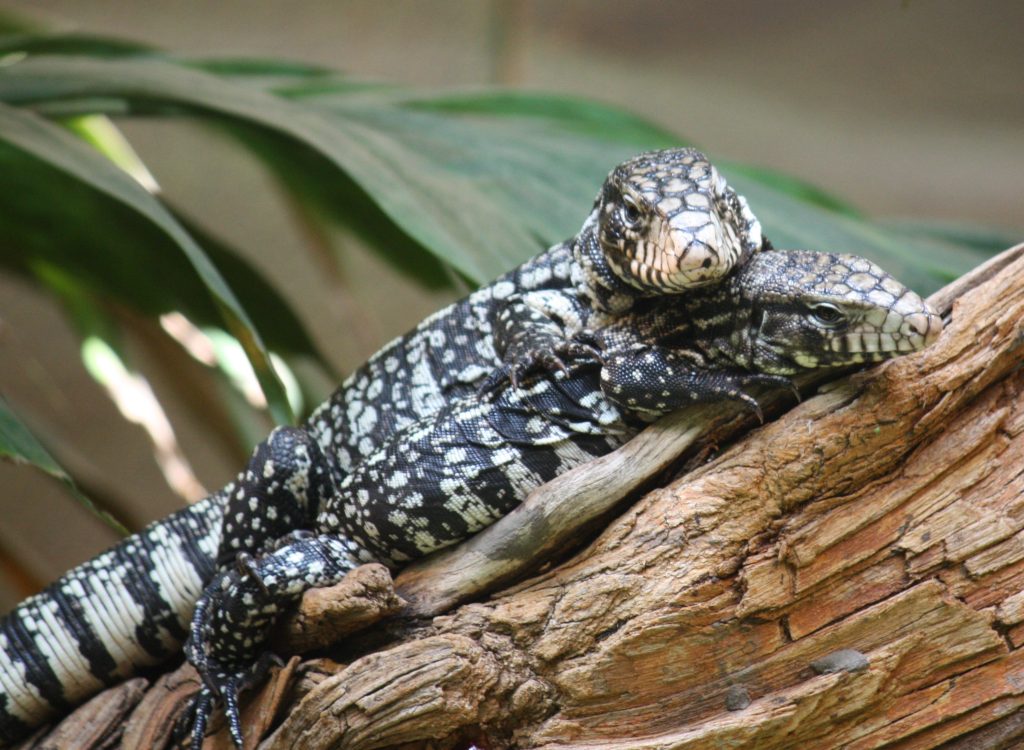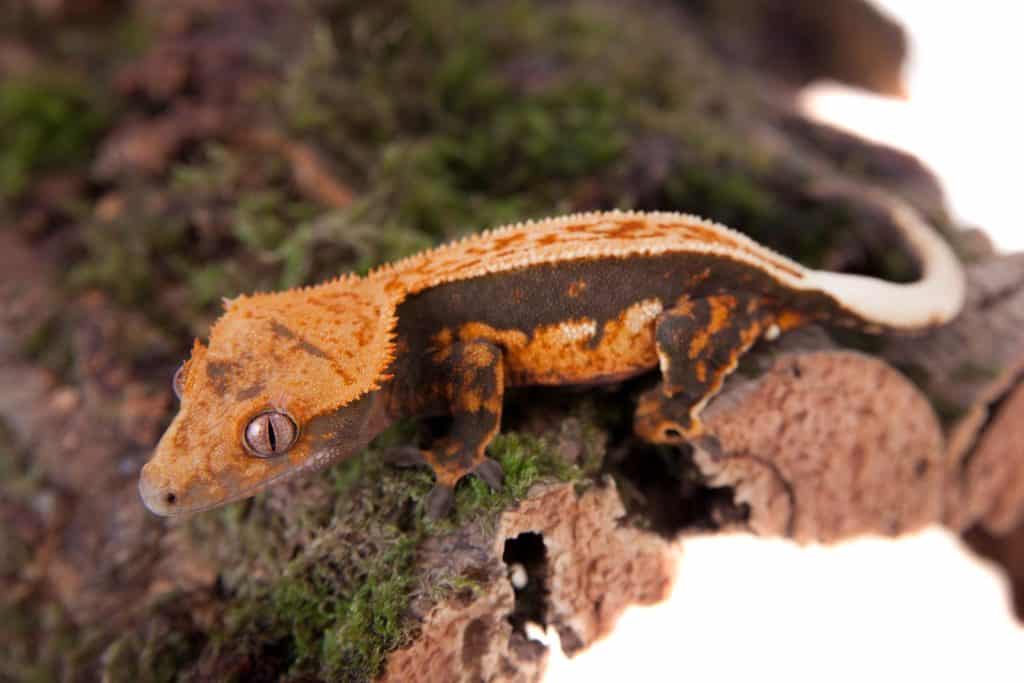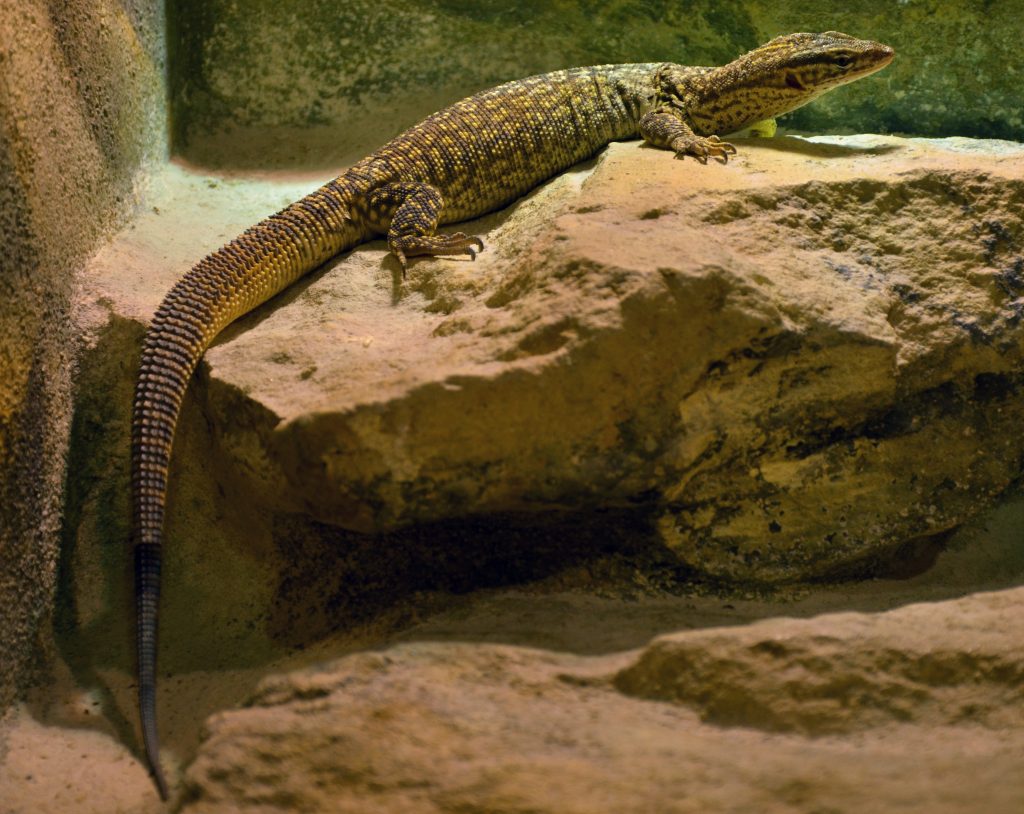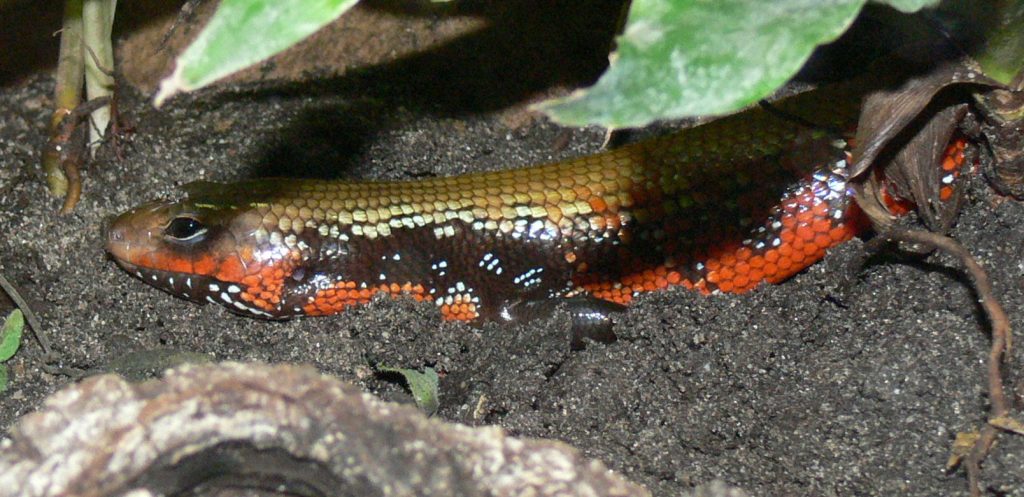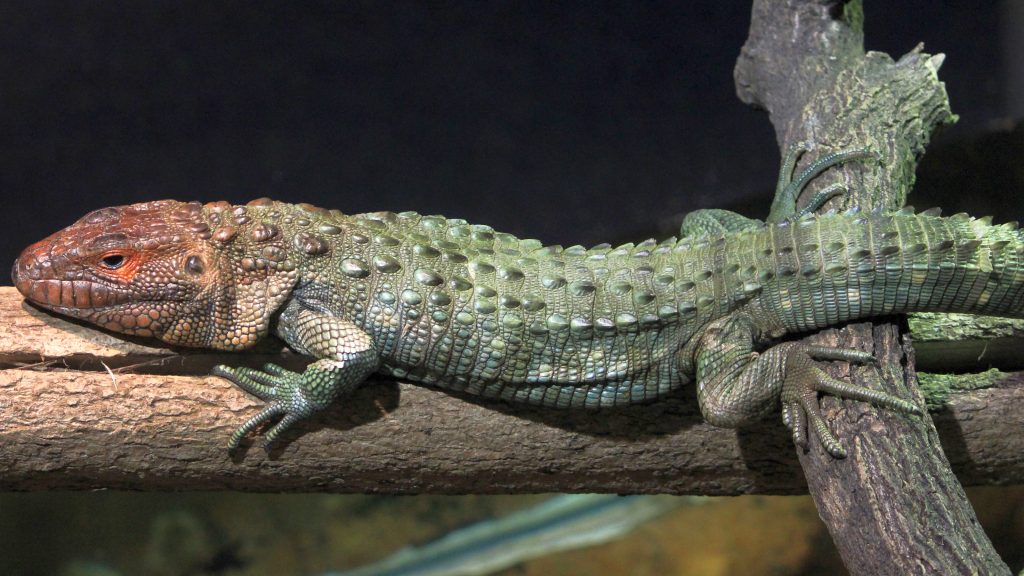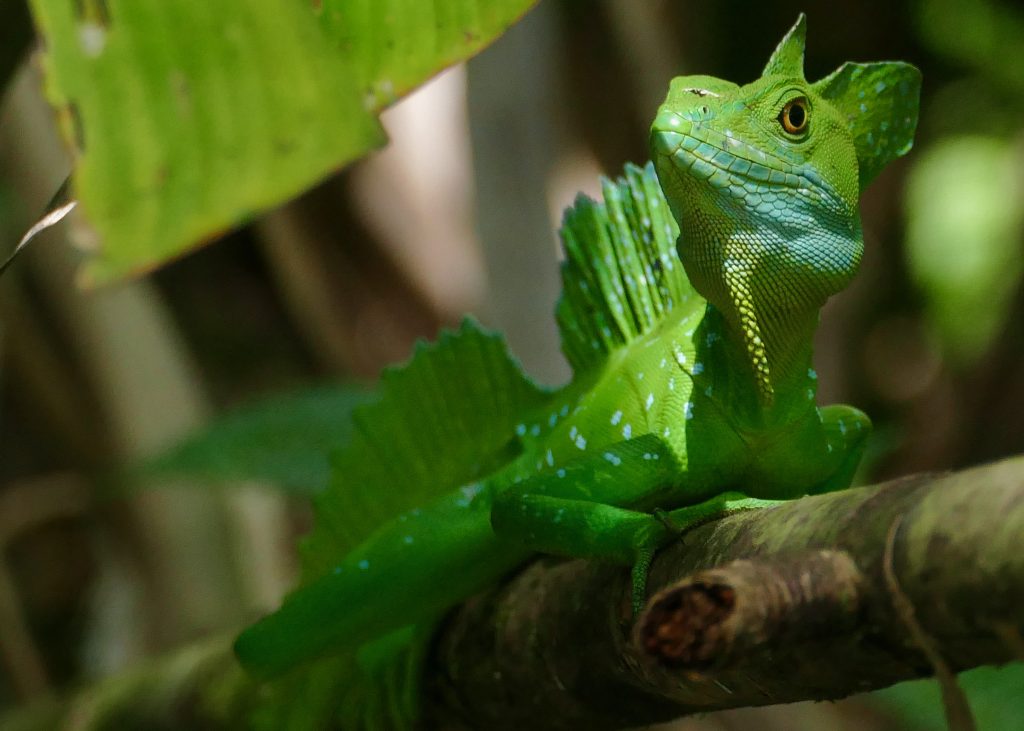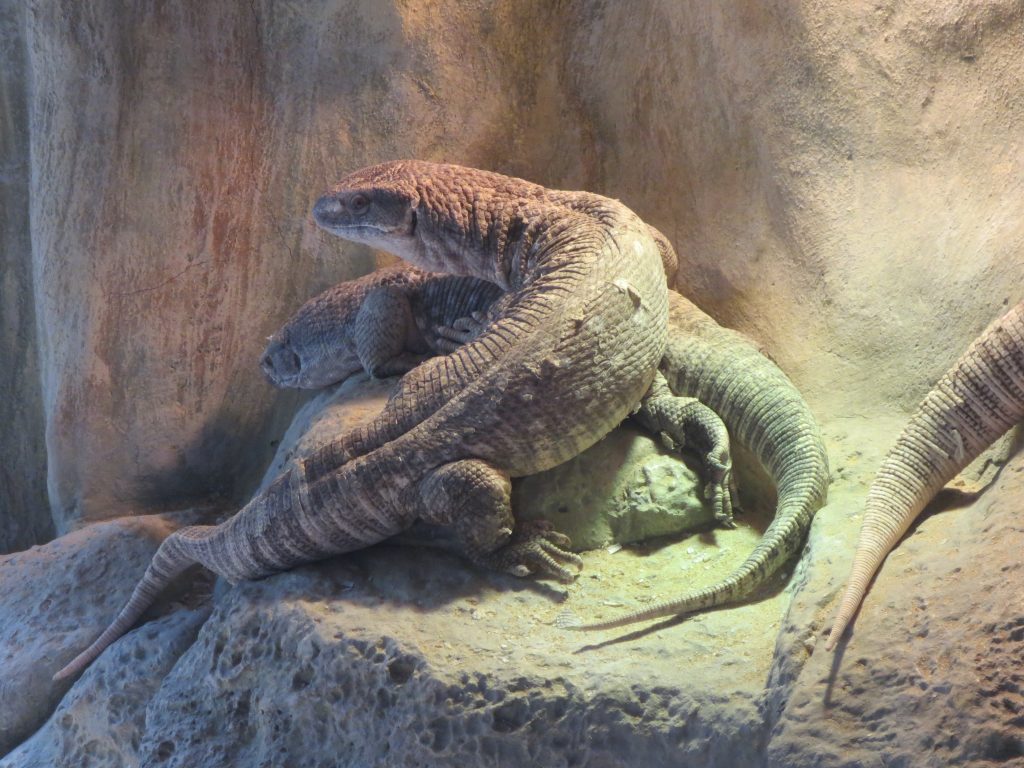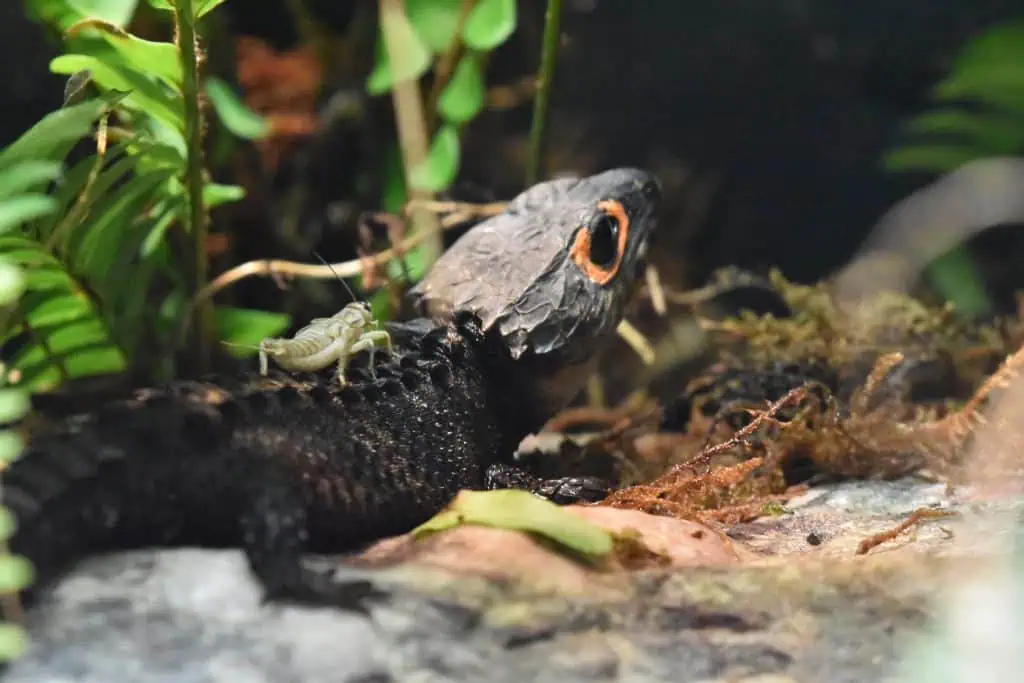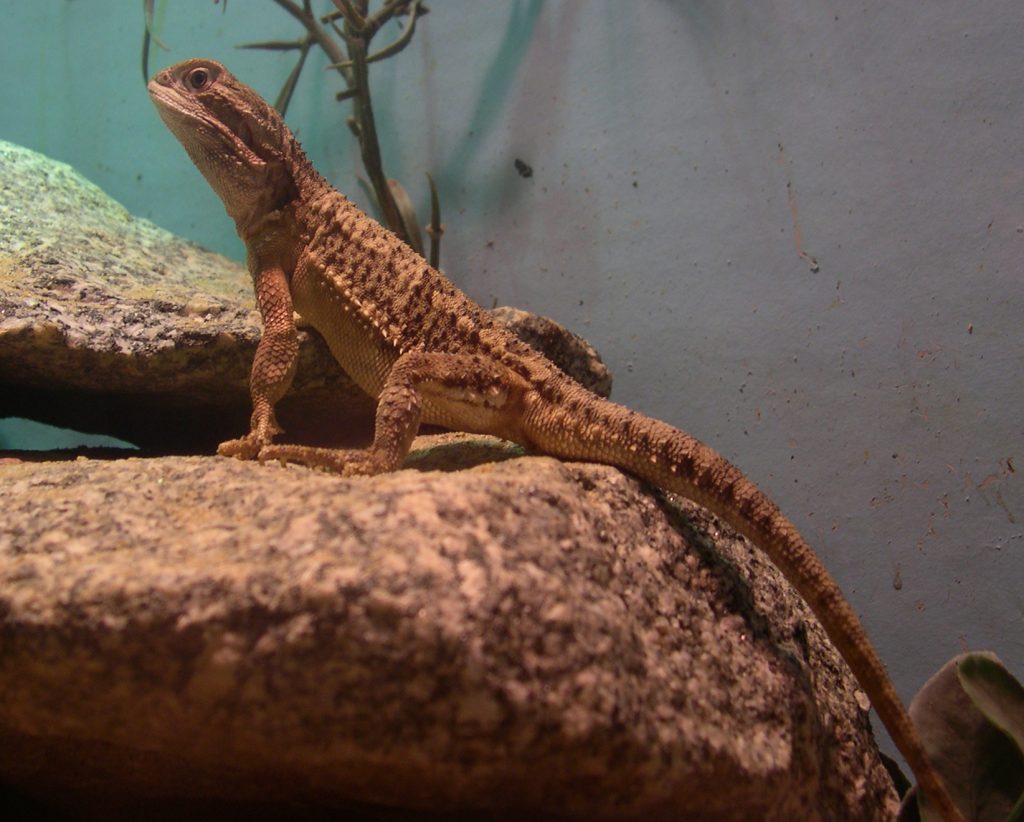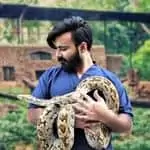Often, when people think about pets, lizards aren’t what first pops into their heads. However, these unique animals showcase the beauty and variety of reptilian life. Imagine having a pet that brings a bit of the wild into your house yet is gentle enough for close interaction and observation. The variety is incredible, from the robust and sociable Bearded Dragon, a top favorite among pet reptiles, to the mysterious Black and White Tegus with their feline-like behavior. You may be amazed at how well these creatures can blend into your life, offering:
- Vibrant colors
- Fascinating behaviors
- And friendship you might not expect
Keep reading to learn about the 11 best lizard pets and find one that matches your way of life and interests and makes the best pet for you.
Top 11 Best Pet Lizards
Looking at care needs, cost, temperament, and more, I present the top 11 pet lizards. Any of these choices would make you a great new household member.
1. Bearded Dragon
| Attribute | Details |
| Scientific Name | Pogona vitticeps |
| Adult Size | ~1.3 to 2 feet |
| Adult Weight | 300-500 grams |
| Lifespan | Around 10 years |
| Tank Size | 55-75 gallons for adults |
| Best For | Beginners, Families with Children |
Originating from Australia, Bearded Dragons are known for their unique ‘beards’ – also known as spines. These spines around their necks puff up when they feel threatened. Medium-sized and robust, these lizards are friendly and easygoing.
- Care and Maintenance: They do best in a well-prepared tank. This tank must have a temperature gradient and UV lighting to mimic its natural environment.
- Activity Level: These reptiles are daytime active. They display a mix of curiosity and calmness that’s engaging.
- Personality and Behavior: Known for their even temper, Bearded Dragons rarely show aggression. This is a big plus for new reptile pet owners.
- Handling: Their gentle nature and tolerance for handling stand out. This makes them particularly suitable pet lizards for beginners.
- Biting Habits: They aren’t typically prone to biting. Especially when regularly and gently handled from a young age, this makes them great pet lizards for kids.
- Diet: Their hardy nature and diet of insects and vegetables make them easy to care for.
Cons
- UV Lighting: The specific tank setup with UV lighting and temperature control can be pricey.
- Regular Cleaning: Regular tank cleaning and maintenance are key.
2. Leopard Gecko
| Characteristic | Details |
| Scientific Name | Eublepharis macularius |
| Adult Size | 7 to 11 inches |
| Adult Weight | 50 – 80 grams |
| Lifespan | 20+ years |
| Tank Size | 10-20 gallons |
| Best For | Beginners and Children over 8 years |
Leopard geckos stand out with their bright colors and unique patterns. They are gentle and small, which is great for beginners and kids. Here’s what makes Leopard Geckos special as pets:
- Care and Maintenance: Looking after them is easy. An adult needs a 20-gallon tank, this tank should have a warm side and a cool side to help them control their body heat.
- Diet: These geckos eat insects. They love crickets, mealworms, and other small bugs.
- Personality and Behavior: These geckos are friendly. They are calm, which makes them great friends.
- Handling: Their calm nature and size make them easy lizards to handle. And this is perfect for people new to caring for pets.
- Activity Level: They are active, but not too much, and you’ll find their behavior interesting without being overwhelmed.
- Biting Habits: They hardly ever bite. This gentle nature is good for kids who want to handle them.
Cons
- Temperature Sensitivity: They need the right temperature to stay healthy and require careful maintenance.
- Dietary Restrictions: Feeding them insects might be tough for some owners.
- Shedding: They shed their skin often. You need to pay attention to their skin and keep their home clean.
3. Black & White Tegus
| Characteristic | Details |
| Scientific Name | Salvator merianae |
| Adult Size | 2.5 – 4 feet |
| Adult Weight | 2.5 – 7.0 kilograms |
| Lifespan | 15 to 20 years |
| Tank Size | Adults require a 6 ft. by 4 ft tank. |
| Best For | Intermediate-level reptile enthusiasts |
Black and White Tegus have a unique look. Their skin is beaded, showing off black-and-white patterns. These reptiles are from South America. They’re smart and warm-blooded. As they grow, their colors change.
- Care and Maintenance: They need a large home that should look like a forest, so use soft bedding, like cypress mulch or coconut husks, and include things that make it feel like where they come from.
- Personality and Behavior: Tegus is smart. They behave a bit like house cats. This intelligence helps them in many ways, from finding food to having babies.
- Handling: They enjoy touches on the ground, but picking them up can bother them. They might use their sharp nails if they’re uncomfortable.
- Activity Level: These tegus are active during the day. They’re lively and can adjust to different situations. This makes them interesting to watch.
- Biting Habits: They have strong jaws. Like a big dog’s, their bite is strong, but they usually bite only when they feel scared.
Cons
- Space Requirement: These reptiles are large and need a lot of space.
- Dietary Needs: They eat both plants and meat. And finding all the right foods for them can be hard.
- Sensitivity to Stress: They get stressed easily. When stressed, they might act defensively.
4. Crested Gecko
| Characteristic | Details |
| Scientific Name | Rhacodactylus ciliatus |
| Adult Size | 8 – 10 inches |
| Adult Weight | 42-45 grams |
| Lifespan | 10-15 years |
| Tank Size | 20-30 gallon tank |
| Best For | Older Children and Adults |
The Crested Gecko is known for its unique “eyelashes” spines above their eyes. They are medium-sized and are loved for their different colors and patterns. Their skin is soft, and they can climb smooth surfaces — thanks to special pads on their toes.
- Care and Maintenance: They do well in 20-gallon tanks and, like a lot of humidity, around 60-70%; these geckos are low-maintenance.
- Diet: They like ripe or overripe fruits & crickets, and this diet gives them good nutrition.
- Personality and Behavior: They are gentle, making them good for older kids and adults, especially if they are new to reptile pets.
- Handling: They are a bit fragile, especially when young, but they get used to being handled gently over time.
- Activity Level: They are calm and not too active. This makes them easy to take care of and interesting to watch.
- Biting Habits: They hardly ever get aggressive and don’t bite much, making them safe for kids.
Cons
Delicate Nature: The smaller or younger ones must be handled very carefully.
Dietary Specificity: They need fruit and insects, so getting this balance right might take extra effort.
5. Ackies Monitor
| Characteristic | Details |
| Scientific Name | Varanus acanthurus |
| Adult Size | 24 inches |
| Adult Weight | 141 to 340 grams |
| Lifespan | 15 – 20 years |
| Tank Size | Adults: 120-gallon and juveniles: 40-gallon tank |
| Best For | Expert reptile enthusiasts |
Ackies Monitors stand out with their strong build and bright colors. Reptile lovers find them interesting, here’s why:
- Care and Maintenance: They need a large home, which should have a deep area for digging, so you need a big specially made enclosure for them.
- Diet: These reptiles eat meat, like insects and small rodents.
- Personality and Behavior: They’re very alert. They react to things around them, which makes them engaging pets.
- Handling: They’re mostly okay with being handled, but you need to be gentle and do it regularly.
- Activity Level: Active and curious, their behavior is entertaining to watch.
- Biting Habits: They can bite if they feel scared or are not handled well, but they’re not usually aggressive.
Cons
- Space Requirements: Their need for a large enclosure can be challenging.
- Dietary Needs: They need different kinds of meat. And providing all they need can be hard.
- Sensitivity: Can be sensitive to improper handling or environmental conditions.
6. African Fire Skink
| Characteristic | Details |
| Scientific Name | Lepidothyris fernandi |
| Adult Size | Upto 15 inches |
| Adult Weight | Upto 70 grams |
| Lifespan | 15-20 years |
| Tank Size | 20-50 gallons |
| Best For | Beginners and Families with Kids |
African Fire Skinks come from West Africa. They’re medium-sized and colorful, with red, black, and gold. They have short, strong legs and a round body, which is unusual for reptiles.
- Care and Maintenance: They need a tank between 20 and 50 gallons of high humidity. Taking care of them is pretty easy.
- Diet: They thrive on a diet of crickets, mealworms & other insects.
- Personality and Behavior: They’re friendly and less scary than other reptiles, making them great for beginners.
- Handling: Their calm demeanor makes them easily accustomed to human interaction.
- Activity Level: They’re diurnal and active, so watching them is fun, especially when it’s light outside.
- Biting Habits: They don’t bite. They’re safe, especially for families with kids.
Cons
- Tank Size: They need a big tank. This might be hard if you don’t have enough room.
- Dietary Needs: They need to eat insects. You’ll have to buy live food often.
- Shedding: They shed their skin a lot. And you need to check this to keep them healthy.
7. Caiman Lizards
| Characteristic | Details |
| Scientific Name | Dracaena |
| Adult Size | 2 to 4 feet |
| Adult Weight | Upto 4.5 kilograms |
| Lifespan | 8 to 12 years |
| Tank Size | Minimum 6 ft L x 3 ft W x 4 ft H |
| Best For | Beginners ready for specific husbandry requirements |
Caiman Lizards are from South America. They are known for their amazing look and bright colors. They have heavy scales and are quite big, which makes them interesting for people who like reptiles.
- Care and Maintenance: They need a big, special home that should have both land & water areas. As semi-aquatic species, they need lots of room to swim and sunbathe.
- Diet: They mostly eat snails, shellfish, and other things found in water.
- Personality and Behavior: They are known for being calm and their unique colors; while they’re not very interactive, they’re still interesting to watch.
- Handling: You can handle them, especially when they’re young. But be careful with the big adults because of their size.
- Activity Level: They’re active during the day. They are active in their water environment.
- Biting Habits: They’re usually not aggressive and seldom bite. But you need to handle them carefully because they’re big and strong.
Cons
- Space Requirements: Require a significantly large and specialized habitat.
- Dietary Needs: Keeping up with their special diet can be hard.
8. Green Basilisk
| Characteristic | Details |
| Scientific Name | Basiliscus plumifrons |
| Adult Size | 18 to 34 inches |
| Adult Weight | Upto 200 grams |
| Lifespan | Up to 10 years |
| Tank Size | 55-gallon tank |
| Best For | Beginners and Experts alike |
The Green Basilisk is special for its ability to “walk” on water. This stunning reptile is from the tropical rainforests of Central America. Their bodies are bright green with touches of yellow and blue. These lizards live in trees and water and move well in both places.
- Care and Maintenance: They need a big vivarium, and this home should have places for land and water, as they need both.
- Diet: They eat a lot of different things as they are omnivores, including insects, small animals, and plants.
- Personality and Behavior: They are always busy and interesting to watch, especially if their home is set up nicely.
- Handling: They aren’t too big or heavy. But be careful when you handle them. They’re quick and agile.
- Activity Level: Highly active, both in water and on land, providing an engaging display of their natural behaviors.
- Biting Habits: They’re not usually aggressive. But they might nip if they feel threatened or are handled badly.
Cons
- Environmental Needs: They need a well-maintained home. It should have the right levels of humidity and warmth.
- Space Requirements: They need a large space. This is because of their active nature and need for land and water areas.
Do You Know? People call Green Basilisks “Jesus Christ lizards” sometimes. This is because they can run over water. Scientists and reptile lovers find this fascinating.
9. Savannah Monitor
| Characteristic | Details |
| Scientific Name | Varanus exanthematicus |
| Adult Size | 2.5 to 4 feet long |
| Adult Weight | Up to 5.8 kg |
| Lifespan | 10 to 20 years |
| Tank Size | Juveniles: 20-40 gallons & Adults: 90-120 gallons, or larger. |
| Best For | Intermediate reptile enthusiasts |
The Savannah Monitor is a smaller, popular species within the monitor genus, known for its friendly nature and ease of care compared to larger monitors. Its grayish-tan color, spots on its back & rings on its tail make it look nice.
- Care and Maintenance: They need a big home. Often, you have to make it, especially for them, and it should have lots of room for them to climb & look around.
- Diet: They do well-eating insects and small animals.
- Personality and Behavior: Requires a large enclosure, often custom-built, with ample space for climbing and exploration.
- Handling: They’re usually friendly. But you need to know what you’re doing because they’re big and strong.
- Activity Level: They’re pretty active & like to move around on the ground and in trees.
- Biting Habits: They don’t bite much but might if they’re not handled correctly.
Cons
- Space Requirement: These guys need a lot of space. And this can be hard if you don’t have enough room.
- Not for Beginners: They’re better for people who already know how to care for lizards. This is because of:
- Their size
- And what they need.
10. Red-Eyed Crocodile Skink
| Characteristic | Details |
| Scientific Name | Tribolonotus gracilis |
| Adult Size | 7-9 inches |
| Adult Weight | 36-45 grams |
| Lifespan | Up to 10 years |
| Tank Size | Minimum 10 gallons |
| Best For | Beginners |
The Red-Eyed Crocodile Skink is known for its special looks and sounds. It’s a good choice for beginners because it’s easy to manage in size and care. Its spiky look and bright orange-red eyes make it a pretty pet.
- Care and Maintenance: They do well in a glass home of at least 10 gallons, and it’s easy to take care of them with basic reptile care.
- Diet: They eat meat, mostly a variety of insects.
- Personality and Behavior: Generally docile and not overly active, making them less demanding in interaction.
- Handling: They’re okay with being handled gently but can be shy.
- Activity Level: They’re not too active, which is good for owners who like to watch their pets more than play with them.
- Biting Habits: These lizards don’t bite often. But they might act defensively if they feel scared.
Cons
- Shy Nature: They can be quite private so the owners need to be patient with them.
- Environmental Sensitivity: They need a well-managed home. And this includes the right humidity and temperature.
11. Rankin’s Dragon
| Characteristic | Details |
| Scientific Name | Pogona henrylawsonii |
| Adult Size | 10-12 inches |
| Adult Weight | 60 to 100 grams |
| Lifespan | 10-15 years |
| Tank Size | Minimum 20 gallons |
| Best For | Beginners with limited space |
Rankin’s Dragon is a smaller relative of the Bearded Dragon with a charming personality. And it’s great for beginners or people who don’t have much space.
- Care and Maintenance: They’re easy to keep in a medium-sized terrarium, which is perfect for those who can’t fit larger reptile pets.
- Diet: They eat both plants & animals. This includes small roaches and vegetables.
- Personality and Behavior: Their good social and friendly behavior makes them great for people new to keeping reptiles.
- Handling: Generally well-tolerated, making them a good choice for interactive pet owners.
- Activity Level: They’re moderately active, providing entertaining observation without being overly demanding.
- Biting Habits: They’re not known to be aggressive and suitable for families.
Cons
- Temperature Sensitivity: They need a carefully regulated environment for optimal health.
What’s the Friendliest Lizard for a Pet?
Bearded Dragon tops the list regarding the friendliest lizard for a pet. Known for their friendly demeanor and enjoyment of human interaction, Beardies form close bonds with their keepers.
Another good option is the Black and White Tegu. They’re bigger. But they’re also known for being friendly and calm, and if you spend time with them and get them used to people, they can be very friendly and like to interact. You make them an appealing choice for those looking for a larger yet gentle pet lizard.
Now It’s Your Turn
As we’ve explored the world of pet lizards, we’ve seen a lot of different kinds. And each one has its own special appeal and needs. These reptiles are more than just interesting animals from faraway places. They can be a loved part of your family. They bring their own behaviors and traits to your life. You might like the friendly Bearded Dragon, the smart Black and White Tegu, or another great lizard I’ve talked about, but remember, picking a pet lizard is an adventure. It’s about:
- Thinking carefully
- Taking good care of them
- And valuing these amazing animals.
Did any of these lizards catch your attention? Are you thinking about getting one for your family, or maybe just for yourself? Let us know what you think in the comments.

